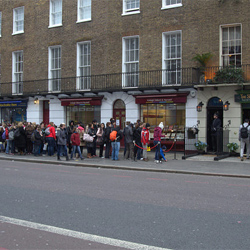As luck would have it, the journalist was at work when I was there, and he agreed to my invitation to get a cup of coffee together.
I’m sure he was fully aware that long wait times are simply part of filming television programs, so rather than take me to the building’s cafeteria, he guided me to a place where nobody would ever be. In fact, though I spent twenty years repeatedly coming to this television station for work, I had never explored it.
The project he was working on at the time was a program on the groundbreaking Italian architect Gio Ponti, and he showed me the set where they were filming. I came just in time as he was in the process of wanting to test the lighting, so he asked me to sit in one of the chairs—which turned out to be a beautiful piece designed by Gio Ponti himself.

The floor and walls of the studio were covered in sophisticated soundproofing material, but what was even more amazing was the way it had been constructed so that it was actually floating in space. Meaning that even when they started refurbishing the room next door, no vibrations, mechanical sounds, or construction sounds ever entered the studio.
Maybe I’ve seen too many horror or action movies, but having a high-tech soundproof room like that made me imagine a potential case of murder. I ended up asking him whether nobody could hear the cries for help if someone drew a gun on them—and even the sound of the pistol shot wouldn’t leave the room.
Maybe I disappointed him with my comment, but he barely took time to explain the lighting and filming systems he had been using for years before quickly ushering me out of that fancy soundproof room.
Gio Ponti is known among Italian architects as one of the most important figures of the twentieth century. His full name is Giovanni Ponti, but the fact that he’s only known by his nickname Gio goes to show how lovable he must have been as a person. He was incredibly active and involved in all kinds of design work and projects, including numerous collaborations with other architects and people from a variety of fields. He worked with Richard Ginori on some pottery designs, for example, as well as vases, knife and fork sets, and—come to think of it, designed the Pirelli building that to this day towers over Milano Centrale Railway Station.
Particularly notable are his cathedral designs. In a country overrun by ornate Romanesque, Gothic, Renaissance, and Baroque churches, there are few lovely modern constructions. But I think Ponti’s works are the exception. His geometric forms have an organic, human quality that conveys a feeling of harmony. It’s a delight to see his buildings in Milan, and his furniture and other designs are still being manufactured and sold today.
After my tour of the television studio, my friend showed me an old sound effects machine that was used in movies long ago. It was a four-sided box that could make four or five different kinds of sounds, including doors, shutters, and windows opening and closing. There was also a roller in the bottom of the box that was used in the recording process.
Unexpectedly, it turned out to be quite a meaningful visit.




























































